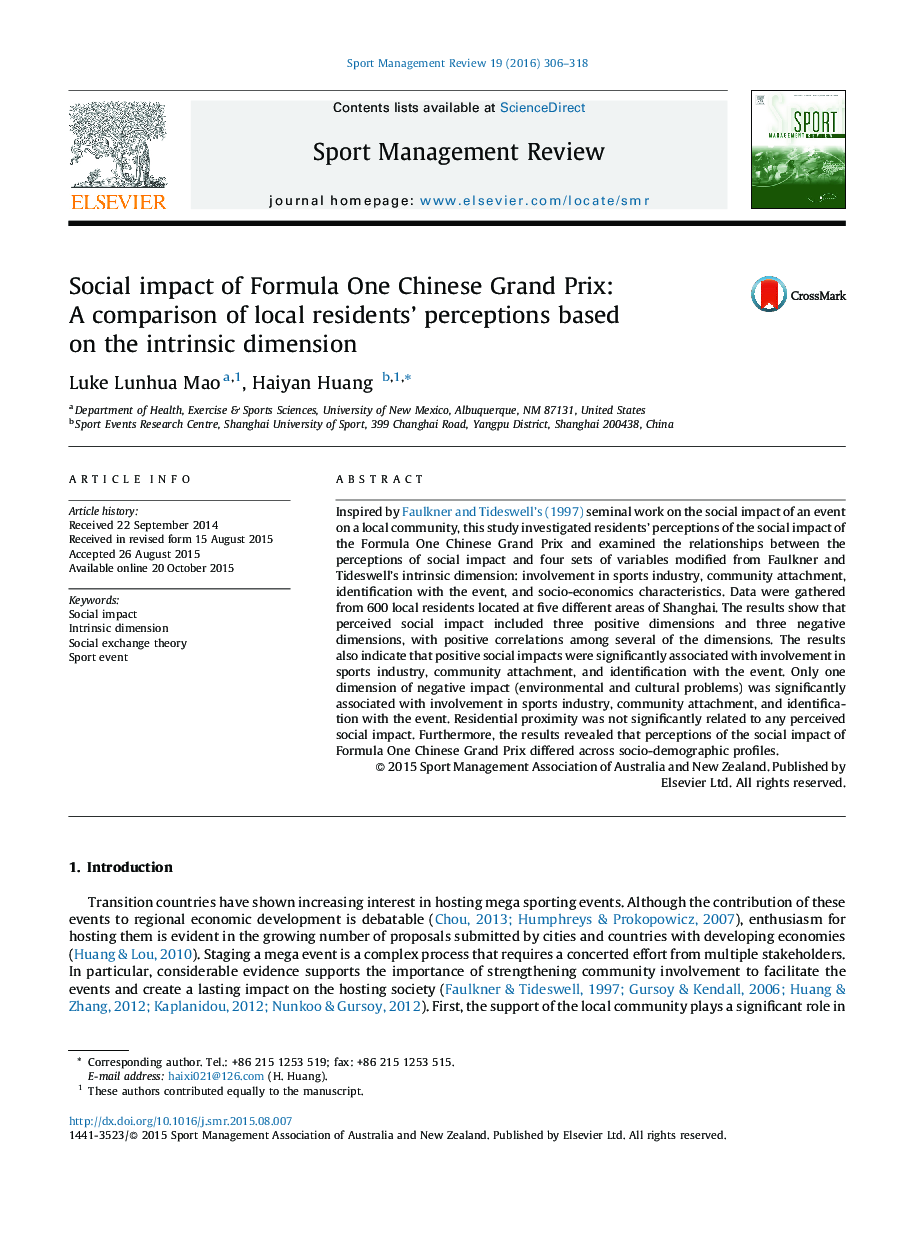| کد مقاله | کد نشریه | سال انتشار | مقاله انگلیسی | نسخه تمام متن |
|---|---|---|---|---|
| 140776 | 162783 | 2016 | 13 صفحه PDF | دانلود رایگان |
• Investigated residents’ perceptions of the social impact of the F1 Chinese Grand Prix.
• Examined the relationships between social impact and intrinsic determinants.
• Social impact had three positive dimensions and three negative dimensions.
• Positive social impacts were significantly associated with three intrinsic determinants.
• One negative impact was significantly associated with three intrinsic determinants.
• Residential proximity was not significantly associated with perceived impact.
• Perceptions of social impact differed across socio-demographic profiles.
Inspired by Faulkner and Tideswell's (1997) seminal work on the social impact of an event on a local community, this study investigated residents’ perceptions of the social impact of the Formula One Chinese Grand Prix and examined the relationships between the perceptions of social impact and four sets of variables modified from Faulkner and Tideswell's intrinsic dimension: involvement in sports industry, community attachment, identification with the event, and socio-economics characteristics. Data were gathered from 600 local residents located at five different areas of Shanghai. The results show that perceived social impact included three positive dimensions and three negative dimensions, with positive correlations among several of the dimensions. The results also indicate that positive social impacts were significantly associated with involvement in sports industry, community attachment, and identification with the event. Only one dimension of negative impact (environmental and cultural problems) was significantly associated with involvement in sports industry, community attachment, and identification with the event. Residential proximity was not significantly related to any perceived social impact. Furthermore, the results revealed that perceptions of the social impact of Formula One Chinese Grand Prix differed across socio-demographic profiles.
Journal: Sport Management Review - Volume 19, Issue 3, June 2016, Pages 306–318
